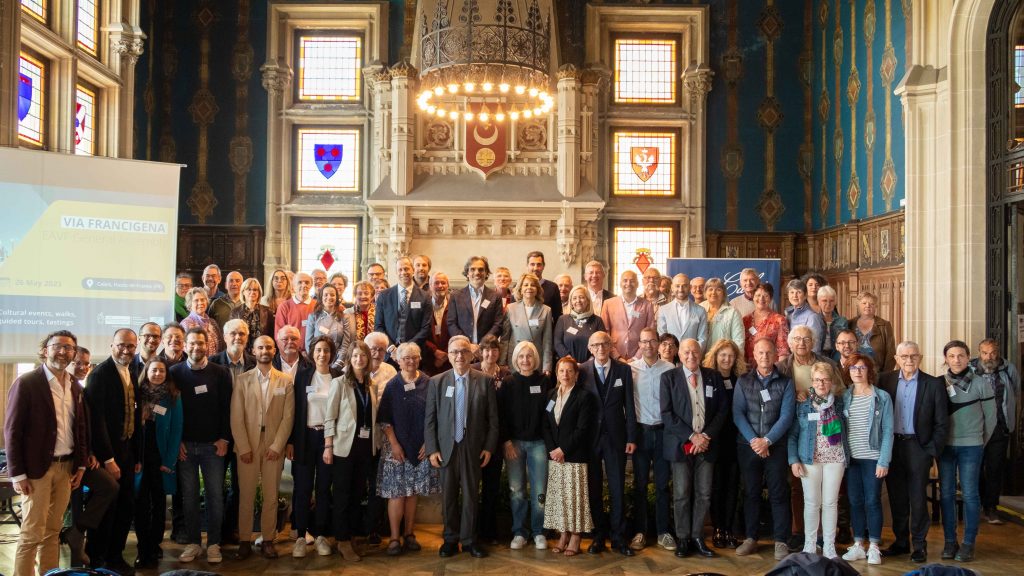European Association of the Via Francigena ways (EAVF)
The Via Francigena promotes a heritage connected to European cultural identities, starting from an historical itinerary that is conveyed by a group of roads, along which the history of Europe formed during the last centuries.
To discover the Via Francigena is to walk a 3200 kms path across England, France, Switzerland and Italy, on the ancient footsteps of medieval pilgrims that walked towards great destinations, such as Rome, Santiago de Compostela or Jerusalem. The Council of Europe granted a recognition of the Via Francigena as a “Cultural Route of the Council of Europe” in 1994. The European Association of the Via Francigena Ways (EAVF) was created on the 7 April 2001 and was certified by the Council of Europe as a carrier network of the Via Francigena Cultural Route in 2007. Council of Europe Cultural Routes
By 2025 the EAVF unites 249 local authorities and 96 non-profit organizations in England, France, Switzerland and Italy as well as more than 400 private stakeholders in hospitality and tourism sectors.
On 7 April 2001, 34 Local Authorities along the Italian route of the Via Francigena according to Sigeric’s itinerary signed the founding act of what is now the European Association of the Via Francigena ways (EAVF). Currently made up of more than one hundred European territorial local authorities, AEVF acts as an impetus for the interlocutors of the itinerary enhancement project (in England, France, Switzerland, Italy), linking all the institutional levels – local, regional, national, European.
AEVF has consolidated an effective governance model, which has earned it qualification as a carrier network (réseau porteur, 2007) by the Council of Europe, which launched the Cultural Routes Programme in 1987. This prestigious recognition, the result of close collaboration with the European Institute of Cultural Routes in Luxembourg, elevates AEVF to a European reference model for the development, protection, preservation and promotion of the Vie Francigene.
It has a bottom-up approach that fosters the relationships between the actors involved in the enhancement of the route, connecting all institutions from the local to the European level. The Association actively works on protection and enhancement of the whole European stretch and promotion of the European values of intercultural dialogue, understanding and highlighting of common to Europe heritage.
Since 2017 the EAVF has been equipped with a limited liability operative structure (Ltd): Francigena Service S.r.l, with the aim to flank the institutional activity with activities and services of an entrepreneurial nature in regard to the suppliers of the Via Francigena and those who operate within the territories crossed by or in the network of the Via Francigena ways. Discover the activities of Francigena Service S.r.l.



